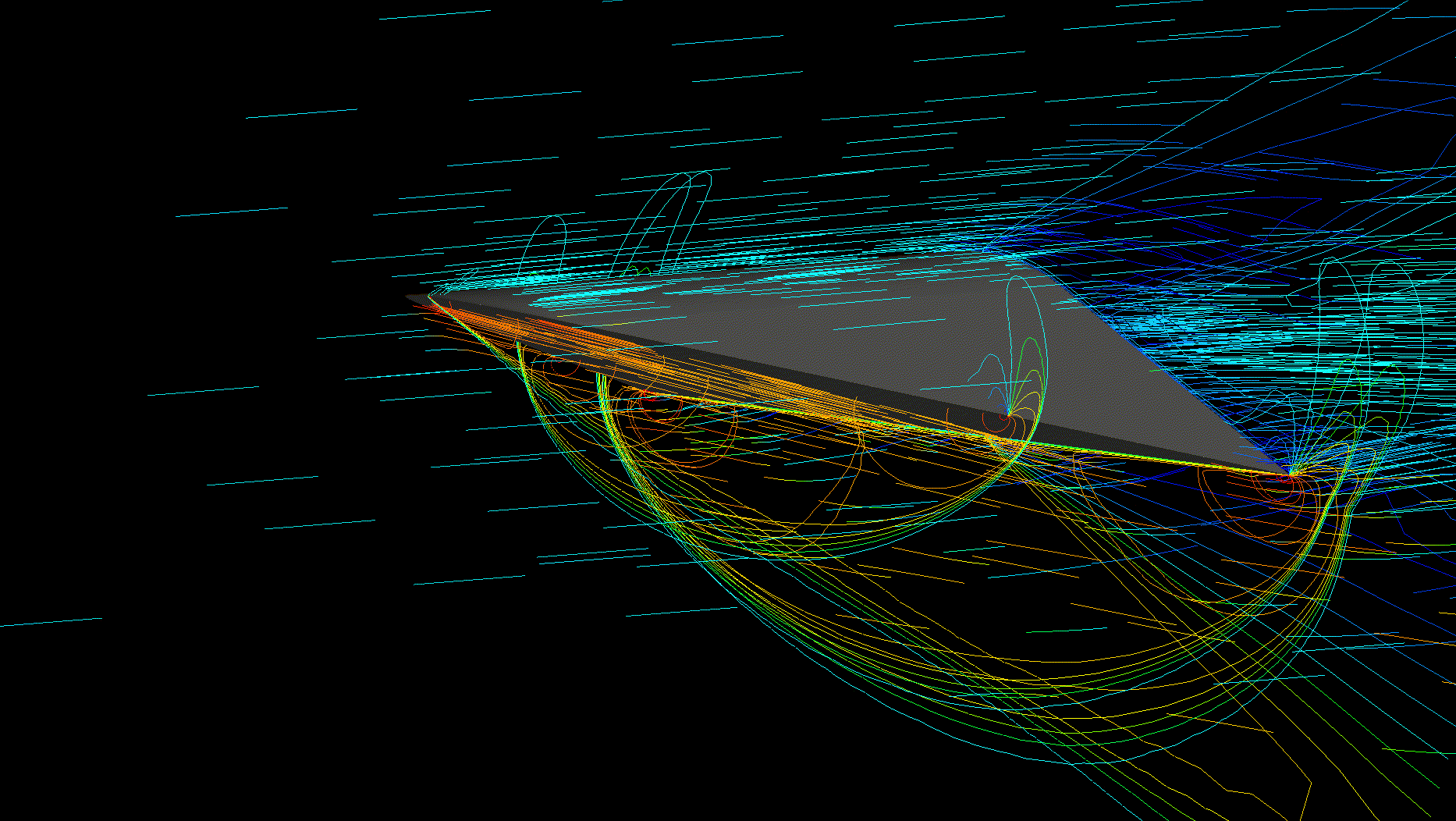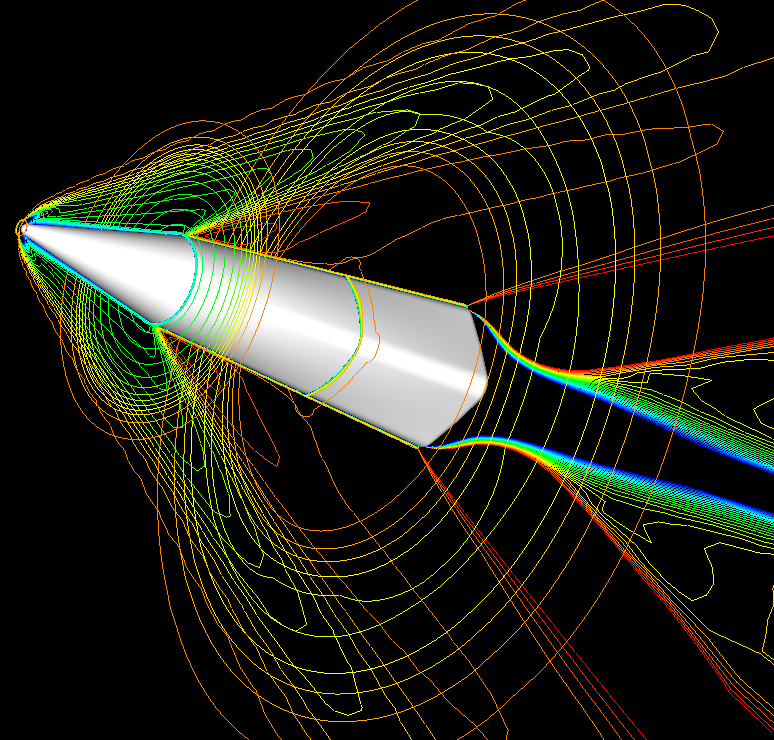Reserch theme
supersonic flow
Evaluate aerodynamic performance of Waverider
Generated the shockwave in supersonic flight decreases drastically Lift to Drag ratio (L/D). Waverider configuration is devised for preventing decrease of L/D in supersonic flight. It is considered as a hypersonic vehicle to achieve high L/D by using high pressure behind the shock wave. It looks like riding the shockwave “Waverider”. We evaluate the aerodynamic characteristics of Waverider from both the Computational Fluid Dynamics (CFD) and Wind Tunnel Testing (WTT) for the purpose of developing actually. Wind tunnel testing is tested by the use of supersonic wind tunnel at ISAS/JAXA. Additionally, Waverider is expected to play an active part as first stage of Two Stage to Orbit (TSTO), we research aiming to achieve TSTO by 2030.

Evaluate aerodynamic performance of Reuseble Sounding Rocket
When the demands on the future launch vehicles are aimed toward lower launch cost and shorter turnaround time, it is evident that the current launch vehicles will not meet those demands because of its high development cost and long development time which every expendable launch vehicle inherits. It is said that two order of magnitude of cost reductions on space transportation will open the way toward realizing the new commercial space transportation business. It is evident that the vehicle reusability is taken it for granted under such circumstances. As a first step toward realizing the reusable launch vehicles, technical demonstration phase of the reusable sounding rocket has been conducted since 2010. The objectives of operating such vehicle are to obtain the designing architecture of the reusable vehicle and to demonstrate the quick turnaround capability. The reusable sounding rockets has four engines mounted at the bottom of the vehicle because to do safely landing even if one engine fail. The present research is to investigate the aerodynamic characteristics of the reusable sounding rockets using a supercomputer to develop a better reuse observation rocket in collaboration with JAXA.

Numerical Simulations of Jet/Freestream Interaction Structures on Liquid Rocket Tank Destruction
The rockets need high safety and reliability. When the hazard happens during the flight, the rocket tank has to be destructed and the propellant has to be ejected from the propellant tank. There is the possibility of a self-ignition and an explosion because of the heated fuel by the shock wave interactions. Therefore, it is important to understand the flow field that the jet interacts with freestream.

Numerical analysis of the diffusion process of the high-pressure hydrogen jet
Installation of hydrogen stations in different parts of the country by the introduction of fuel cell vehicles are underway. The storage method of hydrogen with hydrogen station is a way to store compressed hydrogen at high pressure (82MPa) to the tank. If hydrogen diffuses from high-pressure hydrogen storage equipment, it is very important to understand the diffusion behavior of hydrogen. In this laboratory, we investigate the diffusion behavior of the high-pressure hydrogen jet by using a numerical analysis.
